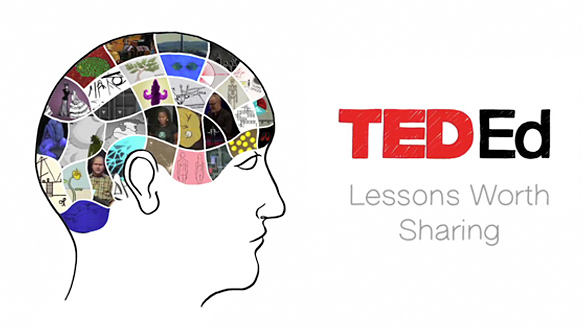TED-Ed Lesson Plan
This interactive TED-Ed lesson plan is designed to provide educators with ideas for integrating a digital tool into their instruction

We are all probably familiar with TED Talks and similar videos of intelligent, engaging, and influential people discussing a broad range of topics relevant to society. In that vein, TED-Ed offers a platform dedicated to teachers and students to speak, view, and learn from others across the world. In addition, TED-Ed is focused on teaching and learning, providing a space for educators to create interactive lessons.
For more information about TED-Ed, check out What is TED-Ed and How Does It Work for Teaching?
This lesson plan provides an idea on how to use the TED-Ed platform for a ELA lesson focused on helping students develop their oral communication skills.
Subject: English Language Arts
Topic: Oral Communication/Public Speaking
Learning Objectives:
At the end of the lesson, students will be able to:
Tools and ideas to transform education. Sign up below.
- Develop talking points for a oral presentation
- Record a Ted Talk-style public speaking presentation
TED-Ed Lesson Plan: Topic of Interest Selection
One of the special aspects about TED Talks in general, and TED-Ed as well, is the broad range of topics covered, including education, finance, politics, and business. This diversity of videos provides the chance for students to explore and learn about a topic of interest that they typically would not focus on in the traditional school curriculum.
To start, allow students to browse the TED-Ed videos. Once they have chosen a video, there are questions to encourage deeper thinking and discussion.
As an alternative, if you want students to focus on a specific topic, they can use TED-Ed’s database, which is organized by subject areas:
- The Arts
- Business & Economics
- Design, Engineering & Technology
- Health
- Literature & Language
- Mathematics
- Philosophy & Religion
- Psychology
- Science & Technology
- Social Studies
- Teaching & Education
- Thinking & Learning
For younger elementary students, the short, animated videos may work better, such as What Animal Can Hear the Best, whereas older students could watch a more traditional TED-Ed video, such as The Difference Between False Empathy and True Support.
Prep, Practice, and Perform
Inspired by the TED-Ed videos that the students have watched, have them prepare their own videos starting with preparing a script. It may be helpful to provide students with your school district’s standards on oral communication and a checklist to follow.
Students can use a digital tool such as VoiceThread to practice recording themselves, which has an immediate pause feature and the ability to re-record a segment. You can decide when students give their talk live in class with an audience (their classmates) or if the final version will be recorded.
Share And Discuss
In the spirit of TED-Talks being shared widely, share your students TED-Ed with other educators, students, and their families.
If you do not want to house the videos on YouTube or other public video platforms, consider using a Padlet or similar tool to house the videos in one location that can be easily accessed by those with whom you share the link.
What Other Lesson Plan Options Are Available through TED-Ed?
In addition to lessons that you create using a lesson plan such as this, TED-Ed offers the ability to create a lesson by using a YouTube video of your choice (you can search for one within the TED-Ed platform). You can develop corresponding questions for discussion with associated resources.
Also, an option is available to create collections in which all of your videos will be easily accessible for your lessons.
Can Teachers Get Involved with TED-Ed?
Absolutely! TED-Ed encourages teachers to participate in the TED-Ed community and has a dedicated space for educators on the website to connect with resources. In addition, there are opportunities for educators to share their voice and create their own TED-Ed talks to be shared.
TED Talks are very entertaining, but TED-Ed adds an exciting layer to the oral communication format. Students can learn course content more deeply while developing the skills needed to effectively speak in public. Try to incorporate TED-Ed into your lesson and share widely with your learning communities.
Related:
Dr. Stephanie Smith Budhai is faculty member in the College of Education and Human Development at the University of Delaware, focusing on Educational Technology, Learning Design, and Justice-centered Pedagogies. She holds two national education technology leadership positions on the Information Technology Council and as Chair of the Culture and Climate Committee for the Society for Information Technology and Teacher Education (SITE). She holds a Ph.D. in Learning Technologies, and a M.S. in Information with a specialization in Library and Information Science, and K-12 teaching certifications in Technology Education, Instructional Technology and Business, Computers, Information Technology, Special Education and Elementary Education. Dr. Smith Budhai is the 2021 SITE Emerging Leader and the 2017 ISTE Awardee for Excellence in Teacher Education. She is also a Nearpod, and VoiceThread Certified Educator. Dr. Smith Budhai has more than a decade of online teaching experience, and has published myriad books (two have been translated into Arabic), articles, and invited editorials surrounding the use of technology and online learning in education. A few of her book publications include:
- Critical AI in K-12 Classrooms: A Practical Guide for Cultivating Justice and Joy
- Best Practices in Engaging Online Learners through Active and Experiential Learning Strategies
- Leveraging Digital Tools to Assess Student Learning
- Nurturing Young Innovators: Cultivating Creativity in the Classroom, Home and Community
- Increasing Engagement in Online Learning: Quick Reference Guide
